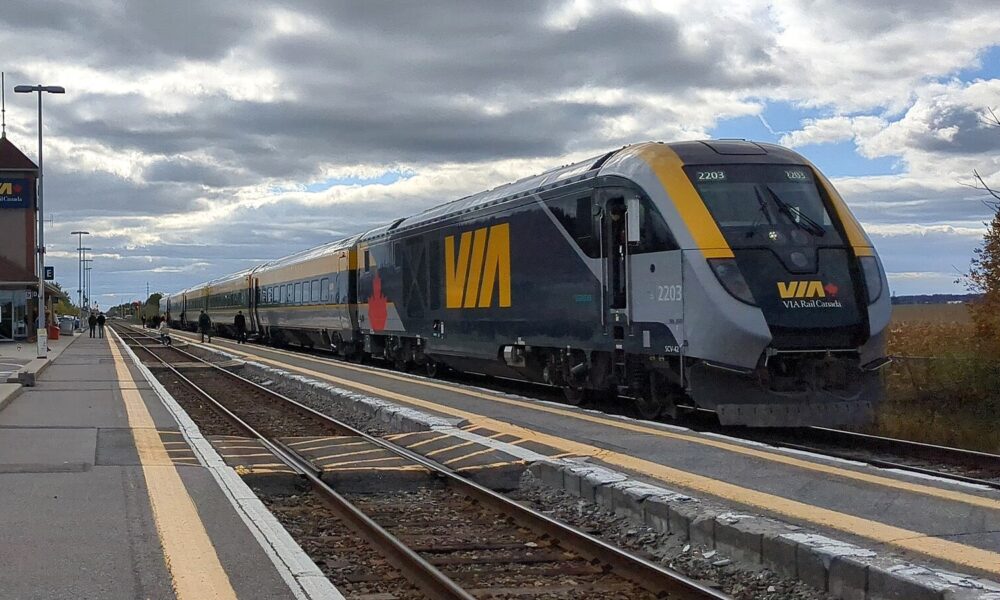Last weekend, what was meant to be a three-and-a-half-hour Via Rail trip between Montreal and Quebec City turned into a disastrous 10-hour ordeal. Due to the train breakdown, passengers were stranded mid-tracks with no food, water, or access to a toilet for hours on end. This delay is just one of many challenges that Canadian railways have faced in the past month. On Aug. 23, rail workers voted to authorize a strike, claiming that Canadian rail companies were not bargaining in good faith and were attempting to undercut progress on working conditions. Though Via Rail’s commercial passenger trains were not directly impacted by the strike, the unpredictable shifts in railway traffic during this period incited delays on all fronts of railway transportation.
When comparing Canada’s railway systems with those in other countries, it’s clear that the country prioritizes freight over passenger services. Historically, railway infrastructure was funded by taxpayers, but today it is privately owned with no public obligations. The privatization in 1995 of the Canadian National Railway (CN) led to the company acquiring both trains and tracks. This effectively created a freight-dominated monopoly as the commercial line, Via Rail, must pay CN to use the train lines. In contrast, 80 per cent of European rail transport is dedicated to passengers, while only 15 to 20 per cent is for freight. This disparity highlights a significant issue in Canada, where the focus on moving goods rather than people has led to inadequate transportation options.
Many Canadians have heard rumours of a high-speed train connecting Toronto and Montreal over the years. Via Rail’s high frequency rail proposal seems like the most recent move towards this becoming a reality. However, no concrete plans have been set into action. Countries such as the Netherlands and France have benefitted from high-speed trains connecting Amsterdam and Paris since 2009, and Japan’s Shinkansens have been around since 1964. These demonstrate the availability of technology and infrastructure for efficient and climate-friendly travel for those who are willing to invest in it. Despite Canada being one of the world’s self-proclaimed leaders in climate action, Canadians wanting to travel sustainably by rail are faced with old trains and tracks, delays, unfair labour conditions, and exorbitant prices. Sustainable transportation is not simply achieved through pushing for electric vehicles; it entails allowing Canadians to get around their large country at a reasonable rate, and to eliminate a dependence on cars and planes for short-distance trips.
Many students consider more than one city home. In McGill’s fall 2023 entering class, respectively, 21% per cent of McGill’s undergraduate and graduate student bodies are from outside of Quebec, pointing to an urgent need for a modernized and efficient rail system in Canada. As Canada’s rail system continues to prioritize freight over passenger services, students—many of whom are already grappling with tuition fees, housing costs, and other rising expenses—are disproportionately impacted by the lack of affordable, dependable, and eco-friendly transit options. This adds an additional stressor that the Canadian government could easily remove by implementing laws to place passenger trains at the forefront of railway traffic and travel.
Additionally, McGill has a vested interest in lobbying for a system that works better as it would benefit its students. If a better passenger transportation system is to be established, universities like McGill should collaborate with Via Rail to encourage and incentivize students to travel by train, whether through discounts, annual passes, or reward programs.
The Canadian government must work to end the monopoly that CN has on Canadian railways, which has impeded efficient passenger travel for far too long. A shift towards a passenger-focused approach in Canada’s rail system could transform infrastructural priorities, making private rail companies’ profits dependent on their ability to transport people efficiently. This would also ensure that commuters are not caught in disputes between private sector workers and management, ultimately aligning workers’ rights with the public’s need for reliable transit. And most importantly, it will emphasize how Canada’s trains can be central to a sustainable future.







